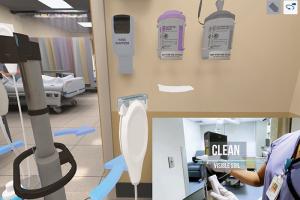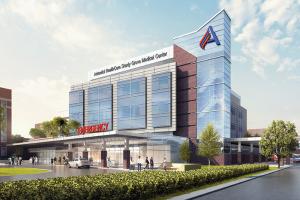Building for tomorrow's health IT needs
Flexible design has been a popular concept in health care design for some time. As the U.S. health system's shape-shifting continues, its facilities are being designed to accommodate new care delivery models. Health care architects and facility managers are tasked with figuring out how to build facilities that can readjust quickly without losing their efficiency to function in the here and now.
While flexible design often is referenced to note a physical space that can be rearranged quickly to function in a different way, the concept also applies to technology used to support care.
In "Designing spaces for multiple generations," Louis A. Meilink Jr., AIA, ACHA, and Christina Grimes, AIA, LEED AP, EDAC, write that "because new technologies and the changing health care delivery system are having such an impact on today's facility design, a well-orchestrated planning and design process is essential in navigating future uncertainty."
While a large health care construction project can take five years to complete, the state-of-the-art technology that was available at the project's outset — or even at its midway point — could be old hat by the time the facility opens it doors.
More of today's medical equipment, such as the glucose monitor, is going wireless. Also, hospitals are approving bring-your-own-device solutions or prescribing hospital-issued smartphones and tablets to clinical staff to help manage and coordinate care. Patients and their visitors also want to stay "connected" during their stay. These are just a few of these factors that demand continual Wi-Fi expansion.
A robust Wi-Fi infrastructure can demand hundreds of access points that, unfortunately, can be disrupted by the facility's design, such as a stainless steel infrastructure or placement of medical equipment. In a recent Spok survey on mobile device trends in health care, insufficient Wi-Fi infrastructure is one of the top three challenges health systems face in adopting a bring-your-own-device policy.
A hospital that is decades old isn't built to handle today's Wi-Fi needs and can require renovation or creative solutions to develop a robust information technology infrastructure. On the other hand, a new health facility can take these factors into consideration before finalizing a new design.
Meilink and Grimes recommend that from the time of initial design to the move-in day, the initial planning team needs to anticipate how technology could influence care as the facility ages "and provide a level of design flexibility to accept the variations prior to move-in, and provide parameters for solutions with longevity."




